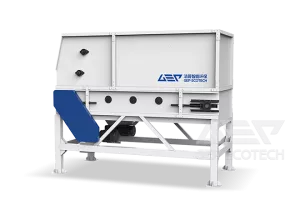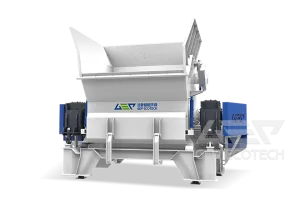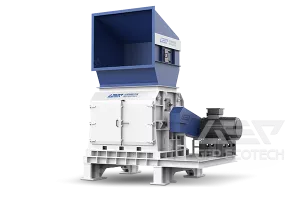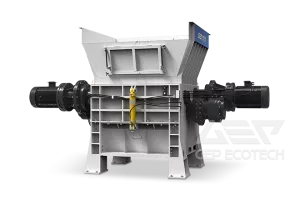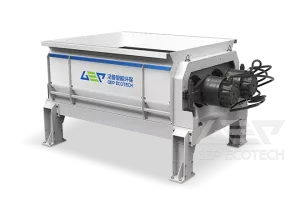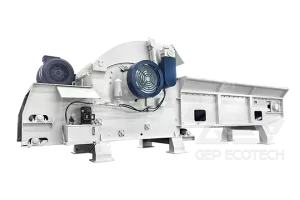A shredder for sick and dead livestock is a specialized piece of equipment used for the efficient and hygienic disposal of deceased or diseased animals in the agricultural and livestock industry. This equipment is designed to process and reduce the volume of animal carcasses while minimizing the risk of disease transmission and environmental contamination.
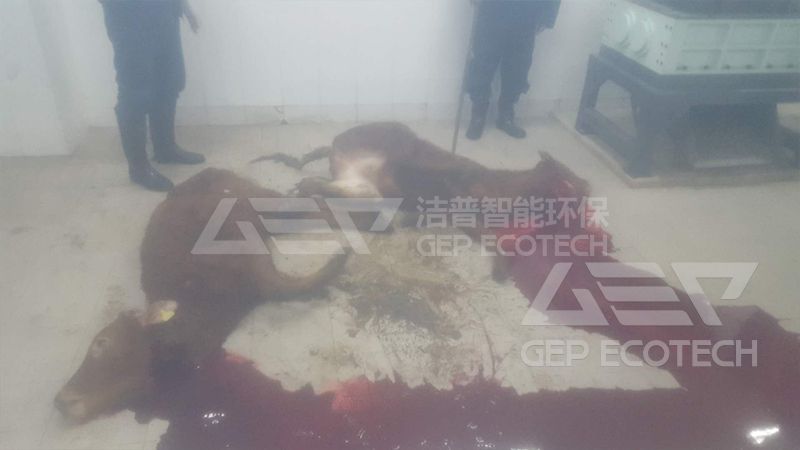
GEP ECOTECH Sick and Dead Livestock Disposal Project
Key Features and Functions
A shredder for sick and dead livestock serves several key functions, all aimed at ensuring efficient, safe, and hygienic disposal of deceased or diseased animals in the agricultural and livestock industry. Here are the key features and functions of such a shredder:
- Volume Reduction: The primary function of a livestock shredder is to reduce the volume of animal carcasses. Deceased or diseased livestock can be quite large, and the shredder effectively shreds and compacts them, making them more manageable for disposal and transportation.
- Biosecurity: Livestock shredders are equipped with biosecurity measures to mitigate disease transmission. These measures may include heat treatment, chemical disinfection, or sterilization to kill or neutralize potential pathogens present in the carcasses.
- Separation of Liquid and Solid Waste: Some livestock shredders have separation systems that can separate liquid components, such as blood and bodily fluids, from solid carcass remains. This separation allows for the individual treatment of liquid and solid waste fractions.
How It Works
Livestock shredders work by mechanically breaking down animal carcasses into smaller pieces while incorporating biosecurity measures. The typical process includes the following steps:
- Loading and Processing: The deceased or diseased livestock carcasses are loaded into the shredder's processing chamber. Inside the equipment, there are rotating blades or hammers that shred the carcasses into smaller pieces.
- Biosecurity Measures: During the shredding process, biosecurity measures are applied to disinfect or sterilize the waste material and prevent the spread of diseases.
- Liquid-Solid Separation (Optional): In some cases, the shredder has a separation unit that separates liquid components from the solid remains. This separation allows for the separate treatment or processing of each waste fraction.
Importance in Waste Management
Livestock shredders play a crucial role in waste management for several reasons:
- Biosecurity: By effectively and safely processing deceased or diseased livestock, shredders reduce the risk of disease transmission, maintaining biosecurity within the livestock industry.
- Environmental Protection: Livestock shredders help minimize the environmental impact of livestock waste by reducing the need for burial or incineration, both of which can lead to pollution and contamination.
- Resource Recovery: The use of shredders can transform animal remains into useful resources, such as organic fertilizers or bioenergy, contributing to waste recycling and resource recovery.
- Economic Benefits: Efficient waste management with livestock shredders can reduce operational costs and improve the economic sustainability of the agricultural and livestock sectors.
In conclusion, a shredder for sick and dead livestock is a critical piece of equipment in the agricultural and livestock industries, promoting both biosecurity and environmentally responsible waste management. Its ability to reduce waste volume, minimize disease transmission, and enable resource recovery makes it an essential tool in modern livestock operations.


